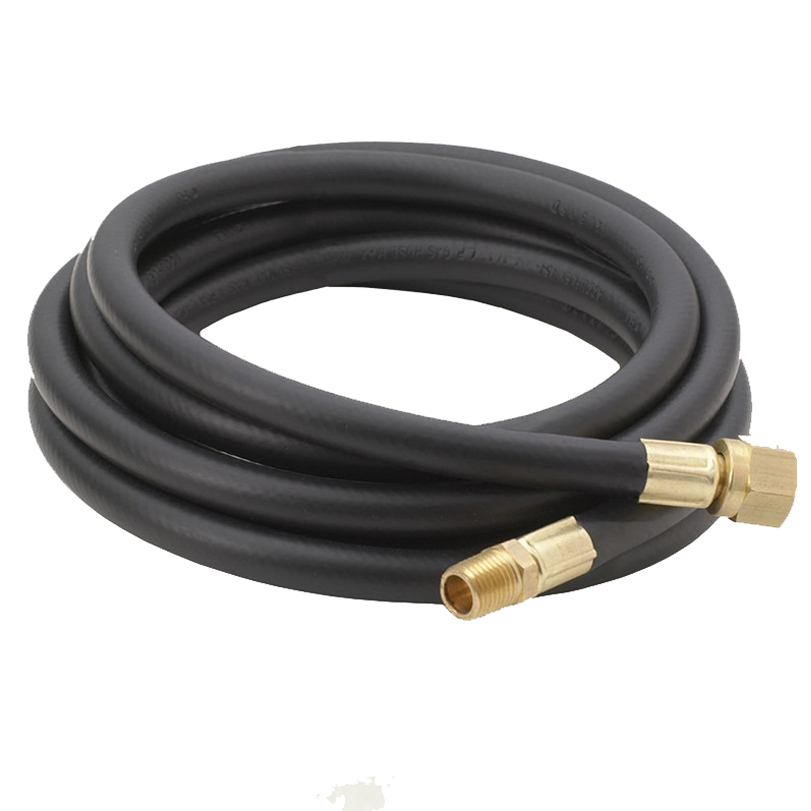335345435
Pro . 09, 2024 17:02 Back to list
Different Categories of Hoses Used in Hydraulic Systems and Their Applications
Types of Hoses in Hydraulic Systems
Hydraulic systems are foundational to a vast range of industrial machinery, construction equipment, and automotive systems. They operate on the principle of using pressurized fluid to transmit power, offering a powerful and efficient mode of operation for various applications. Central to these systems are hydraulic hoses, which play a critical role in conveying the hydraulic fluid from one component to another. Understanding the different types of hoses used in hydraulic systems is essential for anyone involved in maintenance, repair, or design.
1. Rubber Hydraulic Hoses
Rubber hydraulic hoses are among the most widely utilized types in the industry. They are known for their flexibility and are often used in applications where bending and coiling are necessary. Rubber hoses are usually reinforced with layers of synthetic fabric or steel wire for added strength and durability. The inner layer is designed to carry the hydraulic fluid, while the outer layer provides protection against abrasion and environmental factors. These hoses are suitable for a wide temperature range and can handle various hydraulic fluids, making them versatile.
2. Thermoplastic Hoses
Thermoplastic hoses are gaining popularity in hydraulic systems due to their lightweight, flexibility, and resistance to abrasion and chemicals. This type of hose is made from thermoplastic elastomers and is often variously reinforced with high-strength materials. Thermoplastic hoses are especially advantageous in applications requiring frequent movement, such as those found in mobile equipment and robotics. They typically handle high pressure and can offer superior resistance to UV rays and ozone, enhancing their lifespan in outdoor applications.
3. Metal Hoses
Metal hoses, made of stainless steel or other alloys, are designed for high-performance applications, particularly where temperatures and pressures are extreme. They are highly resistant to heat, chemicals, and physical damage, making them ideal for harsh environments. Metal hoses can be made in various configurations, including braided and unbraided types, each serving specific applications. While they offer great durability and safety, metal hoses can be less flexible compared to rubber or thermoplastic options. Their rigidity makes them well-suited for fixed installations or areas requiring a robust hose that can withstand mechanical stress.
types of hoses in hydraulic system

4. Wire-Braided Hoses
Wire-braided hoses are essentially rubber hoses reinforced with layers of steel wire. This construction allows them to tolerate high pressures, making them ideal for demanding hydraulic applications. These hoses are typically more durable than standard rubber hoses and can be used for various types of hydraulic fluids. Due to their robustness, wire-braided hoses are often employed in construction, mining, and agricultural machinery, where the risk of wear and damage is high. Users appreciate their ability to maintain performance under high-pressure scenarios.
5. Spiral-Bound Hoses
Spiral-bound hoses are specifically designed for extreme-pressure applications. They consist of multiple layers of wire spirals encased in protective rubber or thermoplastic layers, preventing collapse and enhancing resistance to pressure spikes. These hoses are commonly used in industries such as oil and gas, where the demands on hoses can be particularly severe. Their spiral design allows for better flexibility and movement without sacrificing structural integrity.
6. Specialized Hoses
In addition to the standard types, there are specialized hoses designed for unique applications. These might include fire-resistant hoses, corrosion-resistant options for acidic environments, or low-temperature hoses for cold-weather operations. The choice of materials and construction methods can significantly affect a hose’s performance and applicability in various hydraulic systems.
Conclusion
Choosing the right type of hose for a hydraulic system is critical for ensuring efficiency, safety, and longevity. Factors such as operating pressure, temperature, environmental conditions, and the specific hydraulic fluid must be considered when selecting a hose. Whether opting for rubber, thermoplastic, metal, or specialized hoses, understanding their characteristics will aid in maintaining optimal system performance. By ensuring the correct hose type is used in hydraulic applications, operators can prevent accidents, minimize downtime, and maintain the efficiency of their machinery. In the ever-evolving landscape of hydraulic technology, staying informed about hose options ensures a reliable and robust system.
-
SAE 100 R17 Black Smooth Cover Hydraulic Hose
NewsMar.07,2025
-
SAE 100 R17 Black Smooth Cover Hydraulic Hose
NewsMar.07,2025
-
SAE 100 R17 Black Smooth Cover Hydraulic Hose
NewsMar.07,2025
-
SAE 100 R17 Black Smooth Cover Hydraulic Hose
NewsMar.07,2025
-
SAE 100 R17 Black Smooth Cover Hydraulic Hose
NewsMar.07,2025
-
steel wire braided hydraulic hose
NewsMar.07,2025



